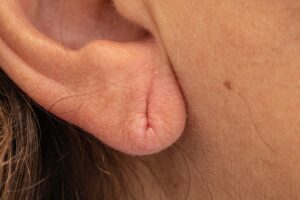What Causes Stretched Earlobes?
Dr. Joe Gryskiewicz, a board-certified plastic surgeon and Dr. John Luck in Edina & Burnsville, MN, specializes in earlobe repair and rejuvenation at Gryskiewicz Twin Cities Cosmetic Surgery ®. With years of experience in cosmetic procedures, they provide expert insights into why earlobes stretch and how they can be restored to a more youthful, natural appearance.
Earlobes may seem like a small feature, but they play a significant role in facial aesthetics and balance. Over time, many people experience stretched earlobes due to aging, lifestyle choices, or injury. This change can affect the symmetry of the face and impact self-confidence. Understanding the causes of stretched earlobes can help individuals make informed decisions about prevention and treatment options.
Understanding Stretched Earlobes: What Happens Over Time?
Earlobes are composed of soft tissue and lack cartilage support, making them more susceptible to stretching and sagging. Over time, factors such as aging, gravity, and repeated stress from earrings or trauma contribute to changes in earlobe shape. Skin elasticity decreases with age, leading to elongated or drooping lobes. When earlobes stretch significantly, they can alter the way earrings sit and affect the overall appearance of the face. Fortunately, with the right preventive measures and medical treatments, individuals can restore the natural look of their earlobes.
What Causes Stretched Earlobes?
Several factors can lead to stretched earlobes. Some of these are a natural part of aging, while others are related to external influences.
Aging and Skin Elasticity Loss
As individuals age, the body produces less collagen and elastin, which are essential for maintaining skin firmness. This reduction in elasticity causes the skin to become thinner and less resilient, making earlobes more prone to sagging and elongation. Even those who do not wear earrings may notice that their earlobes appear longer as they get older. Over time, the loss of skin support can create an aged look, prompting many to seek earlobe rejuvenation procedures.
The Impact of Heavy Earrings
Wearing large or heavy earrings consistently places strain on the delicate earlobe tissue. The constant downward pull from these earrings can gradually stretch the piercing hole, leading to elongation or even complete splitting of the lobe. The heavier the earring, the greater the impact on the earlobe over time. To reduce the risk of stretching, individuals should rotate between heavier and lighter earrings, limit the duration of wearing large earrings, and consider using supportive earring backs to distribute the weight more evenly.
Earlobe Gauging and Intentional Stretching
Earlobe gauging, a practice where individuals intentionally stretch their earlobe piercings using plugs or tunnels, can result in permanent changes to the lobe’s shape. Once the earlobe is stretched past a certain point (typically 6mm or larger), it becomes difficult or impossible for the tissue to contract naturally. For individuals who later decide they want to restore the original appearance of their earlobes, surgical earlobe repair is often the only effective solution.
Accidental Trauma and Tearing
Earlobes are vulnerable to accidental injuries caused by earrings getting snagged on clothing, pulled by children, or caught in hair. A sudden tug on an earring can lead to a partial or complete tear in the earlobe. This type of trauma may result in a widened piercing hole or a full split, making it impossible to wear earrings comfortably. When a tear occurs, surgical repair is typically necessary to restore the natural shape and integrity of the earlobe.
Genetics and Natural Earlobe Shape
Genetics play a role in determining earlobe thickness and skin elasticity. Some individuals naturally have thinner or more delicate earlobes, making them more prone to stretching over time. Others may have larger lobes from birth, which can become more prominent with age. Understanding one’s genetic predisposition can help in taking preventive measures early on.
The Role of Gravity
Gravity exerts a continuous pull on earlobe tissue, leading to sagging over time. Even individuals who do not wear earrings can experience gradual elongation of the lobes due to the downward force of gravity. When combined with other factors such as aging or heavy earring use, gravity can significantly contribute to earlobe stretching.
Can Stretched Earlobes Be Prevented?
While some factors like aging and genetics are unavoidable, individuals can take proactive steps to reduce the risk of earlobe stretching:
- Choose Lightweight Earrings: Opt for smaller or lightweight studs for everyday wear rather than heavy earrings.
- Use Supportive Accessories: Consider earlobe support patches or cushioned earring backs to distribute weight evenly.
- Moisturize and Protect: Keeping the earlobe skin hydrated helps maintain elasticity, reducing the likelihood of stretching.
- Monitor Piercing Holes: Check for signs of elongation or thinning and switch to lighter jewelry if needed.
- Avoid Sleeping in Earrings: Reducing unnecessary strain on the earlobe tissue can help maintain the integrity of the piercing hole.
When Is It Time to Consider Earlobe Repair?
If stretched or torn earlobes have started affecting self-confidence or the ability to wear earrings comfortably, it may be time to consider professional repair. Some signs that indicate the need for treatment include:
- Enlarged piercing holes that make it difficult to wear earrings properly.
- Noticeable asymmetry or sagging that affects overall facial aesthetics.
- Completely torn earlobes caused by trauma or excessive stretching.
- Persistent discomfort or irritation in the earlobe area.
Dr. Joe Gryskiewicz provides surgical and non-surgical treatments at Gryskiewicz Twin Cities Cosmetic Surgery ® to restore natural-looking earlobes.
How to Fix Stretched Earlobes: Treatment Options at Gryskiewicz Twin Cities Cosmetic Surgery ®
Earlobe Repair Surgery (Lobuloplasty)
For patients with significantly stretched or torn earlobes, earlobe repair surgery is the most effective solution. During this procedure, excess tissue is removed, and the earlobe is carefully reshaped to achieve a natural contour. The surgery is performed under local anesthesia and requires minimal downtime. Stitches are typically removed within one to two weeks, and once fully healed, patients can have their ears re-pierced if desired.
Dermal Fillers for Earlobe Rejuvenation
For individuals with mild to moderate earlobe thinning or elongation, hyaluronic acid dermal fillers can restore volume and improve firmness. The results are immediate and typically last 6–12 months, making this a great non-surgical alternative for rejuvenation.
Laser Skin Tightening for Mild Cases
For those experiencing early-stage sagging, laser treatments can stimulate collagen production and improve skin texture, helping the earlobes regain firmness.
Why Choose Dr. Joe Gryskiewicz for Earlobe Repair in Minnesota?
Dr. Gryskiewicz has over 30 years of experience in plastic surgery and is a board-certified expert known for achieving natural, aesthetically pleasing results. He takes a personalized approach to earlobe restoration, ensuring each patient receives the best possible care.
Stretched Earlobes FAQs
Can stretched earlobes return to their original shape naturally?
- Mildly stretched earlobes may shrink slightly over time if heavy earring use is discontinued, but significantly stretched or torn earlobes typically require surgical repair to restore their natural shape.
How long does earlobe repair surgery take?
- Earlobe repair surgery is a quick, in-office procedure that typically takes 30 to 60 minutes, depending on the extent of the repair needed.
Is earlobe repair surgery painful?
- The procedure is performed under local anesthesia, so patients do not feel pain during the surgery. Mild soreness or swelling may occur afterward, but it is easily managed with over-the-counter pain relief.
Can I re-pierce my ears after earlobe repair?
- Yes! Once the earlobes have fully healed—typically after six to eight weeks—patients can have their ears re-pierced if desired.
Are there non-surgical options to fix stretched earlobes?
- For mild cases, dermal fillers can restore volume and structure to thinning earlobes. However, severe stretching or tears require surgical intervention.
How long is the recovery period after earlobe repair?
- Most patients experience minimal downtime and can return to normal activities immediately, though stitches are typically removed after one to two weeks.
What should I do if my earlobe piercing keeps getting larger?
- If you notice your piercing hole expanding, switch to lighter earrings, avoid prolonged earring wear, and consider consulting a plastic surgeon to prevent further stretching.
Book a Consultation
For expert earlobe repair and rejuvenation, schedule a consultation with Dr. Joe Gryskiewicz at Gryskiewicz Twin Cities Cosmetic Surgery ® today.
📍 Serving Edina, Burnsville, and surrounding Minnesota areas.
🔗 Contact Us to Learn More
Medical References
- Repair of Gauged Earlobes: Case Series and Review – National Center for Biotechnology Information – https://pmc.ncbi.nlm.nih.gov/articles/PMC8611704/
- What to Know About Ear Stretching – WebMD – https://www.webmd.com/skin-problems-and-treatments/what-to-know-about-ear-stretching3
- Earring Hole Trauma: Stretching, Tears, and Treatment – Healthline – https://www.healthline.com/health/earring-hole5
- Ear Disorders – MedlinePlus – https://medlineplus.gov/eardisorders.html6
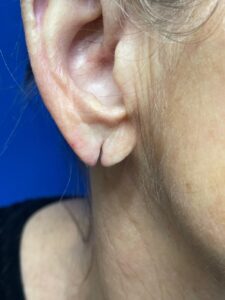
Patient with a Torn Earlobe
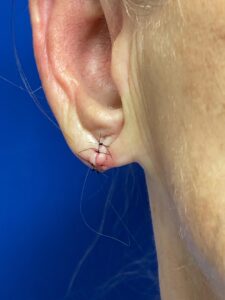
Patient with a Torn Earlobe
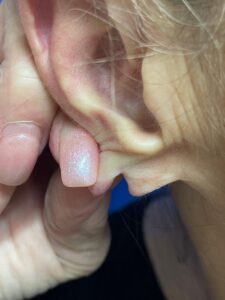
Patient with a Torn Earlobe
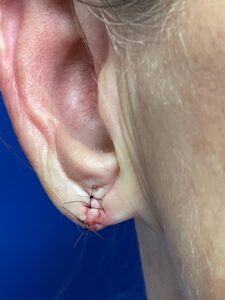
Patient with a Torn Earlobe
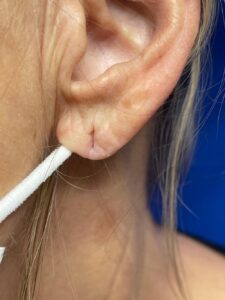
Patient with an Elongated Earlobe
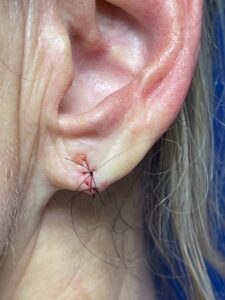
Patient with an Elongated Earlobe

Shown one week post-op and the day the sutures were removed and shows early healing but dramatic improvement.
*Individual Results May Vary
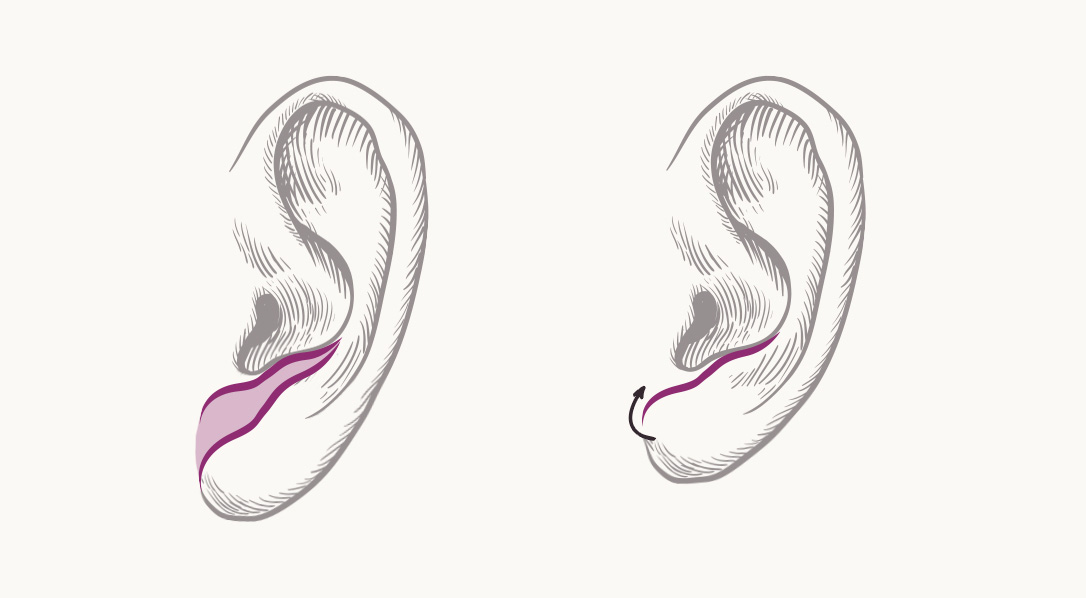
Earlobe Reduction Surgery
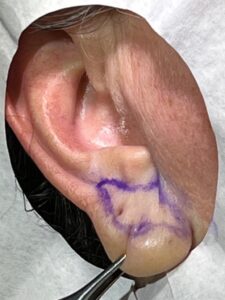
Surgical Blueprint
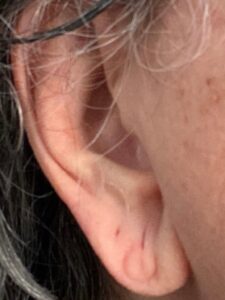
Before
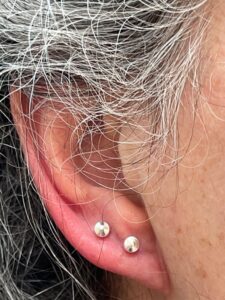
6 Weeks After
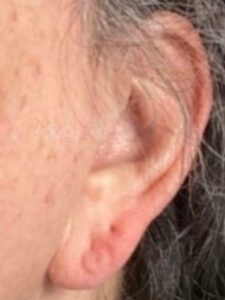
Before
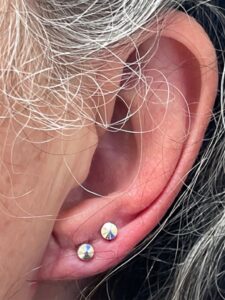
6 Weeks After
*Individual Results May Vary


